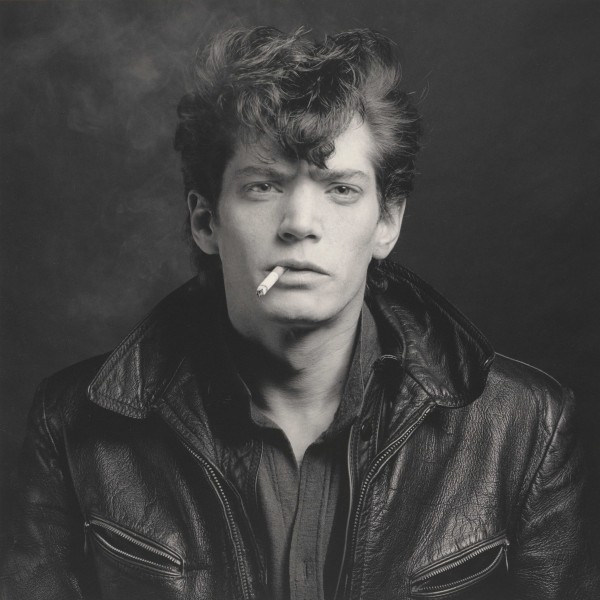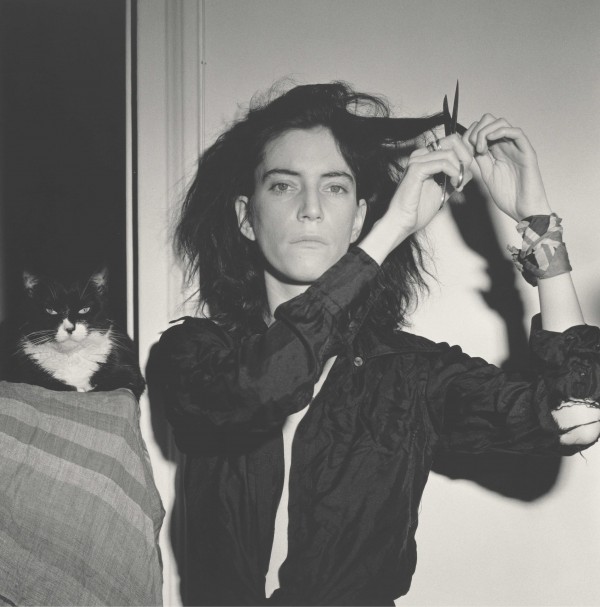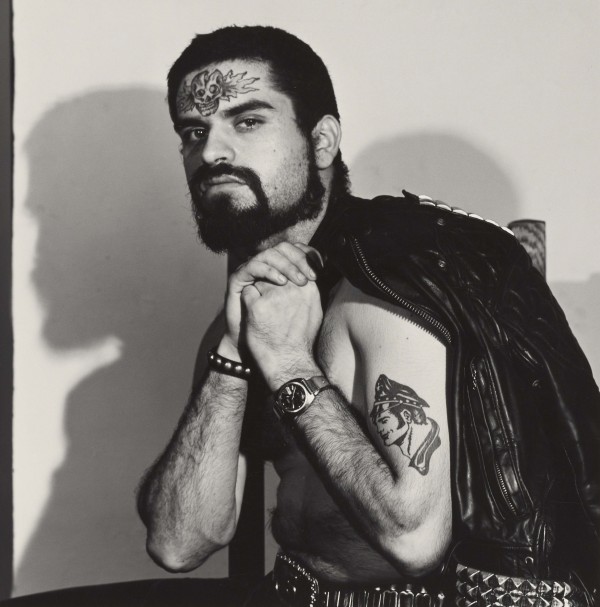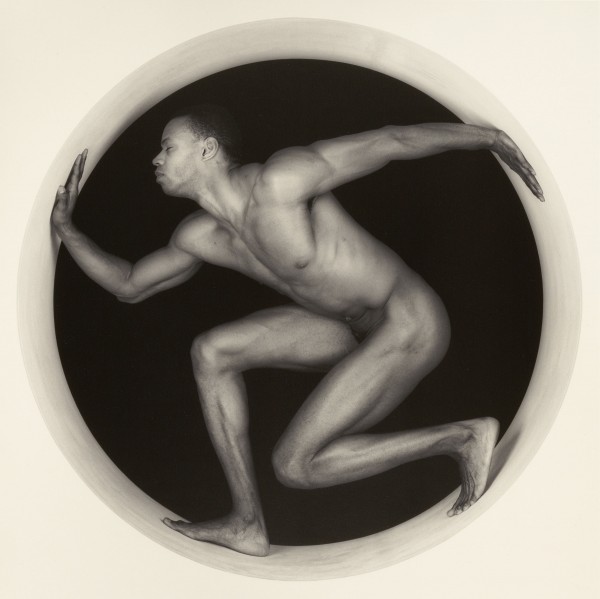It’s always a pleasure to visit the J. Paul Getty Museum on top of the hill overlooking downtown LA and the San Fernando Valley; the views are spectacular, the architecture of modern white and grey buildings is jutting up against the blue sky, the gardens are blooming with flowers. This Monday March 14 the place was empty except for a few dozen journalists attending a preview of the photography retrospective Robert Mapplethorpe: The Perfect Medium. LACMA presents a companion exhibition of Mapplethorpe photographs and early artwork, opening March 20. In 2013 LACMA had exhibited Mapplethorpe’s XYZ portfolios 1978-1981. X-homosexual sadomasochistic, Y-floral still lifes, Z-nude black men.

I was familiar with some of this work, having followed the “photography as art” scene in Los Angeles since the G. Ray Hawkins Gallery and the Photo Album Gallery of Stephen White opened in 1975. My own art photographs had been included in an artists portfolio edited by writer Eve Babitz, with cover art by graphic artist John Van Hamersveld. But I was impressed by the extensive range of these two exhibitions.
It was most interesting to me that a large selection of the photography collection of Samuel Wagstaff is also exhibited at the Getty, because it gave me a chance to revisit classic images that I loved, such as Gloria Swanson by Edward Steichen (1924) and Gustave Doré by Nadar (1855). Wagstaff (November 4 1921-January 14, 1987) had become young Mapplethorpe’s (November 4, 1946-March 9, 1989) lover and benefactor in 1972, bought him a Hasselblad and set him up in a studio loft on Bond Street.

Robert was determined to become an artist since childhood, growing up in a Catholic family of 6 children in Queens; in 1963, at age 16, he enrolled at Pratt Institute in Brooklyn to study art. In 1967, at age 20, he met and fell in love with poet-songwriter Patti Smith. In her 2010 memoir Just Kids, Smith wrote affectionately about their relationships. The singer will be performing live at the Getty on April 30.

In 1970, Mapplethorpe started taking photographs with a borrowed Polaroid camera. In 1973, he had his first solo exhibition at New York’s Light Gallery. In 1976, he became involved in the sado-masochistic sex and leather fetish scene of New York’s gay club the Mineshaft.

In 1980, Robert met Lisa Lyon, the first woman body-builder, and collaborated with her on a series of photographs collected in the 1983 book, Lady. In 1980, he photographed his black lover’s large uncircumsized penis jutting our of his zipper. This image, Man in Polyester Suit, was sold at Sotheby’s in 2015 for $478,000.
In 1986, Mapplethorpe was diagnosed with AIDS and became even more obsessed with making money (he charged $10,000 for a portrait session) and with being recognized as an artist (he photographed his elegant flower still lifes in color). In 1988, he established a foundation to protect his legacy and support medical research on AIDS. His archives were donated to the Getty in 2011.

A Robert Mapplethorpe retrospective opened at the Whitney Museum in July 1988, with the terminally ill artist in attendance. In 1989, a traveling show, Robert Mapplethorpe: The Perfect Moment, by the Philadelphia Institute of Contemporary Art, was touring the country when homophobic hysteria fomented by Republican Senator Jesse Helms caused its cancellation at the Corcoran Gallery of Art in Washington DC. Of the 175 images included, only 5 had a homoerotic subject.
Most illuminating for learning about Mapplethorpe’s life and obsessions in explicit detail is the documentary Mapplethorpe: Look at the Pictures (to air on HBO on April 4).
Top photo by the author. All other photos by Robert Mapplethorpe, courtesy LACMA and the Getty Museum.
